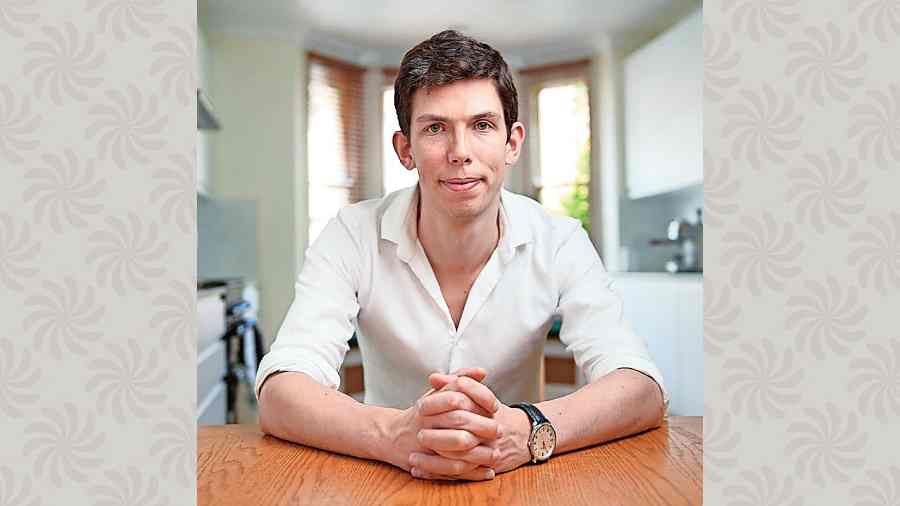A Ukrainian mathematician whose feats one peer said would have made the 20th century mathematical genius Srinivasa Ramanujan “extremely, extremely happy” is among four winners of the 2022 Fields Medals, widely considered equivalent to a Nobel Prize in mathematics had there been one.
The International Mathematical Union (IMU) on Tuesday announced the winners — Ukrainian Maryna Viazovska, 37, at the Swiss Federal Institute of Technology, Lausanne, Frenchman Hugo Duminil-Copin, 36, at the University of Geneva, Korean-American June Huh, 39, at Princeton University and Britisher James Maynard, 35, at Oxford.

Hugo Duminil-Copin. Matteo Fieni

June Huh. Lance Murphey

James Maynard. Ryan Cowan
Viazovska is the second woman to receive the Fields Medal, a prize awarded once every four years since 1950 to “recognise outstanding mathematical achievement” by those below 40. Maryam Mirzakhani, an Iranian mathematician and the first woman to receive the prize in 2014, died of cancer in 2017.
The Fields Medals are funded by a trust established by the 20th century Canadian mathematician J.C. Fields at the University of Toronto. The award includes a citation, a 14-karat gold medal weighing 169gm and a cash prize of 15,000 Canadian dollars (Rs 9.1 lakh).
Over a 13-year period between 2003 and 2016, Viazovska generated a formula for what some mathematicians call a “magic function” which is connected to an advanced version of the problem of how many spheres can be packed in a box wasting the least space.
“Viazovska’s solution is truly striking,” Andrei Okunkov, a mathematician at Columbia University in New York, said in a description of her work. James Thale, an American mathematician, had suggested in the past that it would take a Ramanujan to find the elusive magic function.
“There is no way to tell if Ramanujan could have found it, but I would guess that seeing the solution (Viazovska has delivered) would have made Ramanujan extremely, extremely happy,” Okunkov said.
In a video posted online on Tuesday by the IMU, Viazovska said: “What we’re doing is shaping the future… maybe it’ll be used in a 100 years from now, but it’s still important.”
In the video, Viazovska has also touched on how Russia’s invasion of Ukraine earlier this year had profoundly impacted her. She recently dedicated a lecture to the memory of a fellow mathematician in Ukraine who had been killed in a Russian missile attack.
“When young people die, you will think okay, what’s the point of my work as a teacher if young talented people are wasted in this terrible war. When someone like her dies, it is like the future dies,” she said.
The IMU said Duminil-Copin has bagged the prize for “solving long-standing problems” in a field called statistical physics that involve efforts to derive properties of huge systems. Duminil-Copin has said his work has provided new insights into a theory that seeks to understand the phenomenon of a liquid moving through something like water flowing over rocks.
Huh, who says he grew up wanting to become a poet to “express the inexpressible” but eventually learned that mathematics is also a way of doing that, has developed proofs of several conjectures in the branch of mathematics called combinatorics.
Maynard has received the prize for his contributions to analytic number theory that the IMU said had led to major advances in the understanding of the structure of the prime numbers, among other results.
“To me, the prime numbers are these really amazing, fascinating objects. They’re the fundamental building blocks of the whole numbers, which are the most natural and basic objects in the universe,” Maynard said in an IMU video on his work.
One problem that Maynard has been interested in almost throughout his career has been the gaps between the prime numbers.
“As you look at prime numbers on the number line, they gradually become sparser and sparser and more and more spread out — which means the typical size of the gap grows as you look at bigger and bigger numbers,” he said.
Maynard’s work with collaborators has shown the existence of clusters of many primes coming close together on the number line, and separately, shown the existence of gaps that are unusually far apart.











